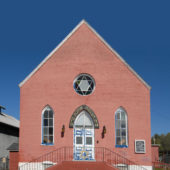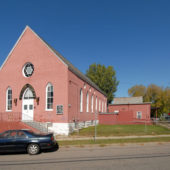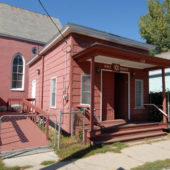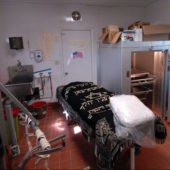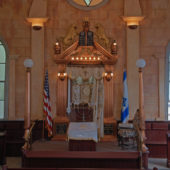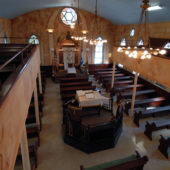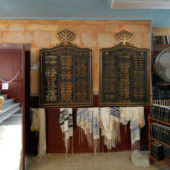Ahavath Gerim Synagogue is the oldest known Jewish building of worship in Vermont and is listed on both the State and National Historic Registries.
To quote Ahavath Gerim Synagogue’s mission statement, it is “a traditional conservative non-political egalitarian congregation that promotes the role of Jewish life to perform mitzvoth encompassing ethical behavior, spirituality, Judaic learning, and ritual observance.”1 This Conservative synagogue located in Burlington, Vermont, focuses on deepening the relationships between Conservative Jews, the State of Israel and the Jewish people. It also has a cemetery, Ahavath Gerim Cemetery, and members of the congregation are provided with a burial site at their time of need.
In the late 1800s, the population of Jewish immigrants from Lithuania living in the United States swelled from approximately 5,000 in 1820 to about 81,000. As a part of this growth, Jews primarily from Lithuania moved near North Street in Burlington, Vermont. Thus, the need for an additional congregation in Burlington arose. As most Lithuanians are Conservative, a Conservative Synagogue was what was required. In 1885 Ohavi Zedek was built. It moved to its current premises in 1952 and the name was subsequently changed to Ahavath Gerim. It is the oldest Synagogue in Vermont and is listed in both the State and National Registries.
The building’s structure is brick Federal, Gothic Revival. Above the entrance is a leaded glass window with a Star of David. Arched, paned windows flank the entrance and sides of the building. Inside, the bimah is at the front, with another leaded glass window with a Star of David above it. The Ark is carved of wood, wherein are held the four Torah scrolls. One chandelier, double tiered with rings of lights drops down in center of the sanctuary. There are three rows of wood pews downstairs in wood, with upper balconies on either side. The ceiling is painted cornflower blue and the walls, bimah, balconies and floor are peach coloured. The walls are faux-painted with a brick effect. An unusual feature about the construction of the building is that there is a door leading from a side street to a room which is used in preparation of bodies for burial.
Rabbi Shulman is the spiritual leader of the congregation. In addition to regular weekly services, the congregation celebrates High Holidays and remembers those of their members with needs. They are a focused, religious congregation, intent on fulfilling their mission purpose.

